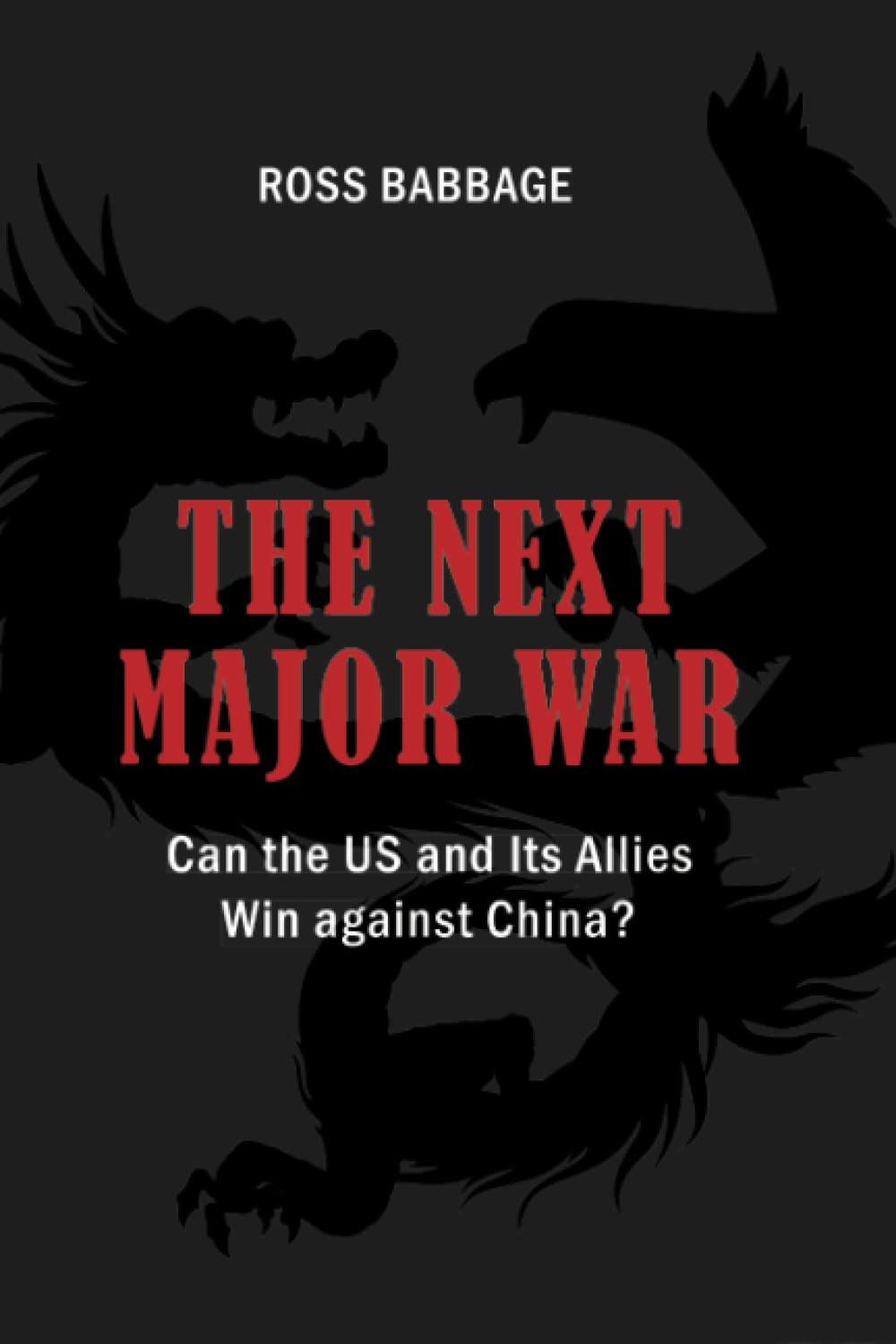By Robbin Laird
I met with Ross Babbage on 5 April 2023 in Canberra to discuss his new book and his assessment of the way ahead in building credible deterrence of the China of President Xi.
Ross Babbage in his new book, The Next Major War: Can the U.S. and its Allies Win Against China? takes the wider view of the Chinese military challenge.
Rather than limiting himself to a force-on-force analysis, he looks at the broader nature of the war the Chinese have prepared themselves to fight and examines the situation which the liberal democracies have put themselves into with decades of globalization and accepting Chinese intrusions into their domestic economies and politics.
This is an important book and reflects the serious thinking and work which Babbage has devoted himself to over the past few years. One of the remedies which Babbage believes necessary to get the West into “fighting shape” is for the strategic leaderships in the West to discuss frankly with their publics all of the dimensions of the strategic challenge we now face. Babbage himself very much contributes to such leadership.
In our recent Williams Foundation seminar, we focused on the re-orientation of Australian defence in shaping and contributing to a wider national and alliance deterrent strategy. In my discussion with Babbage, we focused on what he considers the three key elements to being able to shape broader defence capability.
For Babbage, shaping a broader defence capability is not just about the ADF and its own operational capability. “If you’re looking at it from Beijing’s point of view, they’d have to think very carefully about messing with us for we do have a very capable although small military and we have even more powerful friends.”
But the ADF lacks strategic depth and sustainability. As Babbage noted: “We are in danger of being a one-month operational military in case of conflict due to the lack of economic and industrial depth, such as the provision of fuels and key munitions and spare parts.”
The second aspect for Australia is its alliance structure.
As Babbage underscored, Australia has focused upon ramping up its alliance working relationships to the point where its own forces can more effectively integrate with the Americans and are working towards greater cooperation with other allies as well, notably the Japanese.
The result is clear: “The sum of alliance efforts is greater than any of the parts. This is a consideration which Beijing has to realize is not working to its advantage. The Chinese threat has drawn many nations in the Pacific closer together to resist authoritarian interference.”
And it is not just Pacific allies: a number of European states have woken up to the realization that China directly threatens their interests, and they have to find ways to contribute to the deterrence of China as well. Babbage noted: “We will cooperate with a range of others, including a number of relatively powerful and capable Europeans with whom we have long-standing partnerships.”
And that led to the discussion of the third element in Australian deterrence, developing more effective regional partnerships. Here he discussed evolving relationships with India, Indonesia, and other Southeast Asian and South Pacific countries. Australia is working hard to develop closer military, security, economic, technological and diplomatic relationships that can strengthen regional cooperation and deterrence.
Working with its neighborhood much more directly and effectively is a key part of shaping the way ahead for Australia’s deterrence strategy.
But beyond these three key elements for shaping the way ahead for Australian deterrence, an important broader question is the need for a national and alliance-wide efforts to strengthen strategic sustainability and endurance. We did not discuss this at length in this meeting, but it is the core of the analysis in his new book.
The challenge is to move from the near and mid-term efforts at enhanced national military capability and allied interoperability to a stronger capability for resilient societies that empower enduring forces, not just one-month militaries. The close allies need to review and restructure their strategic supply chains as a matter of urgency to reinforce each others’ economic and industrial strengths and cover their respective weaknesses.
New levels of allied cooperation are required along with new planning and management mechanisms. These initiatives are needed urgently if the allies are to have a credible deterrent going forward and if they are going to be able to endure and sustain themselves in the event of major conflict.
Also, see the following:
Meeting the Chinese Military Challenge: Taking the Wide View


